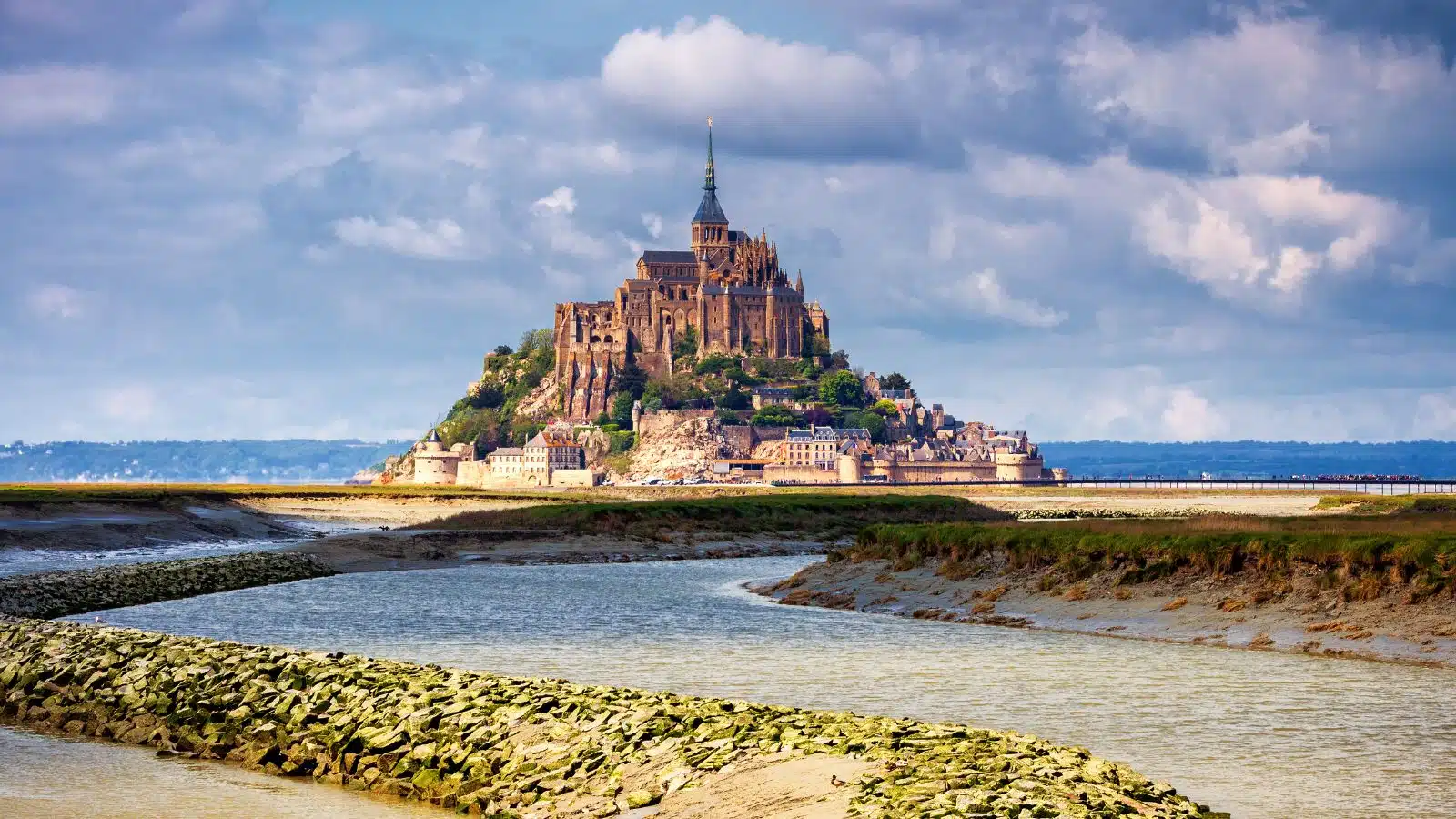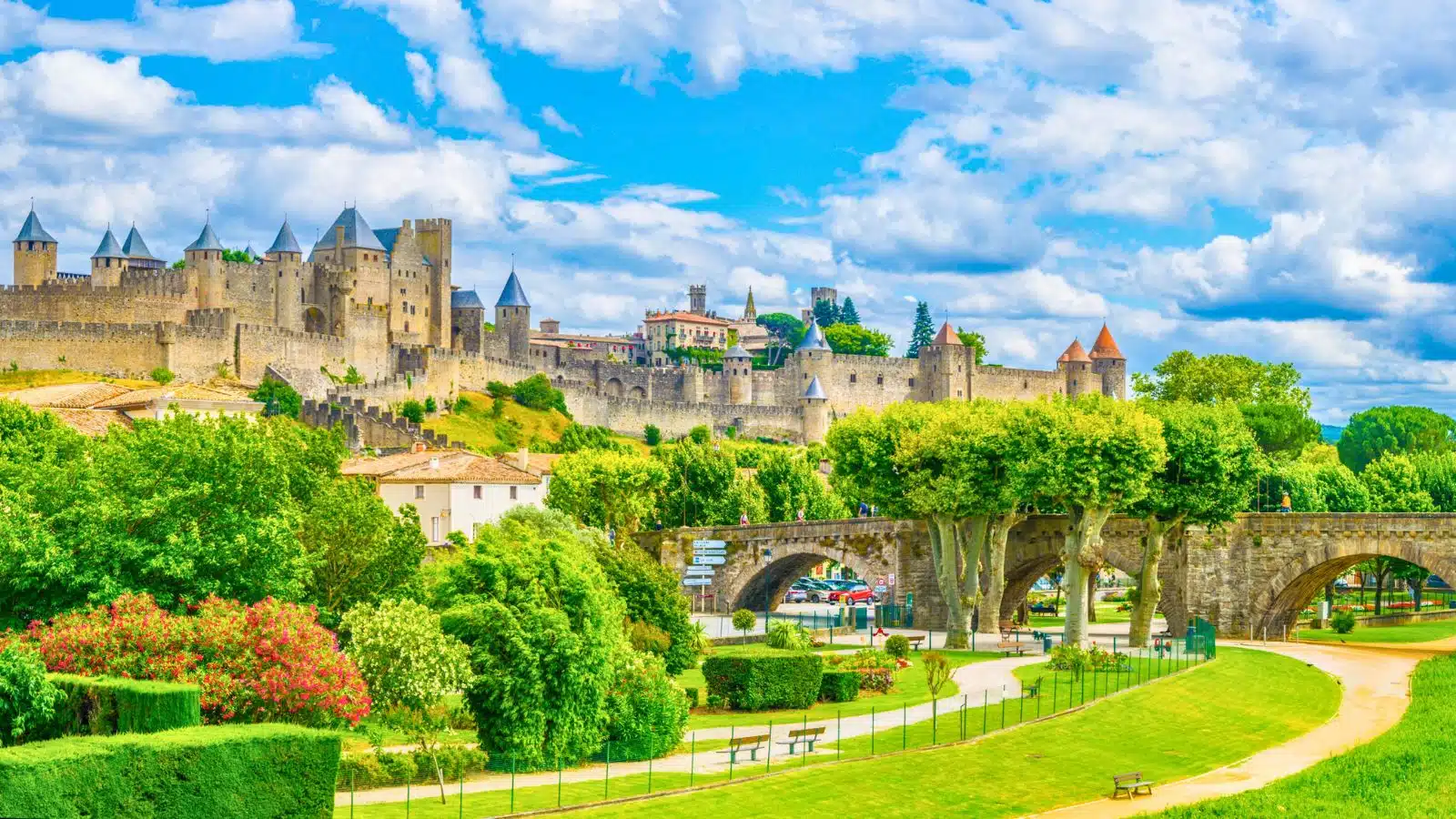France’s allure is no secret. Officially Europe’s most visited country, it attracts around 80 million people every year – roughly equivalent to the United Kingdom and Italy combined.
Tourists flock here for the food, art, history, and landscapes, all of which are sublime. However, a mistake many make is staying exclusively in Paris. The French capital is iconic, but there’s so much more to see!
From famous wine regions and epic mountain ranges to towns stuck in medieval time warps, there are extraordinary sights across the country. Read on to discover 12 famous landmarks in France beyond the typical Parisian attractions.
1. Palais des Papes, Avignon

Avignon, in Southern France, is home to one of the most remarkable buildings on earth, let alone in France.
Palais des Papes is an enormous 14th-century Gothic masterpiece that has functioned as both a fortress and a palace. Meaning “Palace of the Popes” in English, it was once a Papal residence. Nowadays, it’s a UNESCO World Heritage Site and one of France’s most famous man-made attractions.
2. Mont-Saint-Michel, Normandy

Located in Northern France, Mont-Saint-Michel looks like somewhere young wizards and witches go to study magic. In reality, it’s a stunning medieval abbey built atop a rocky islet that gets cut off from the mainland at high tide. Dating to the 8th century, it’s been a pilgrimage site for over 1,000 years and a UNESCO World Heritage Site since 1979.
3. Carcassonne

Carcassonne is in a league of its own in medieval architecture. It’s an iconic fortress and impeccably well-preserved walled city built on Roman foundations. Carcassonne’s history is long and turbulent, with giant ramparts and watchtowers to show for it. Expect to feel transported back in time as you explore its maze of cobbled streets.
4. Château de Chambord, Loire Valley

Chambord is an infamous château located in the beautiful Loire Valley. It’s huge, striking, and straight out of a fairytale.
Built in the 16th century as a hunting lodge for King Francis I, it was a symbol of power that remains one of the planet’s finest examples of Renaissance architecture. Explore the grand building with its famed spiral double helix staircase and see the largest enclosed forest in Europe that surrounds it.
5. Pont du Gard

This ancient Roman aqueduct spanning the Gard River (hence the name) was built in the 1st century AD to carry water to the Roman colony at modern-day Nîmes. Rising almost 50 meters into the air across three tiers of arches, it’s one of the best-preserved Roman aqueducts on the planet. It became a UNESCO World Heritage Site in 1985.
6. Roman Theatre of Orange

The Rhône Valley, in France’s Provence-Alpes-Côte-d’Azur region is home to another ancient Roman wonder. This spectacular theatre has a famous façade that’s over 100 meters long, almost 2 meters thick, and stands 37 meters tall. A UNESCO World Heritage Site, it dates to the 1st century AD when it was built under Emperor Augustus.
7. Gorges du Verdon

The Gorge du Verdon is sometimes called the Grand Canyon of Europe. Around 15.5 miles (25 km) long and up to 700 meters deep, it’s officially the largest canyon on the continent.
Turquoise waters and towering cliffs make it incredibly photogenic, too, and outdoor lovers will be in their element. You can hike, kayak, climb, and swim until your heart’s content.
8. Nîmes Amphitheatre

Situated inland in southern France, Nîmes was once a Roman colony called Nemausus. Thanks to its location on the Via Domitia – a vital road that connected Italy and Spain – the city flourished.
Today, you’ll find many relics of its Roman past, including a famously well-preserved amphitheater that rivals Rome’s Colosseum in scale, grandeur, and historical value.
9. The Camargue

If you visit Nîmes, make sure you take the short trip south to the Camargue. This distinctive wetland region on the Mediterranean coast is renowned for its natural beauty and biodiversity. Camargue horses, cattle, and hundreds of species of birds (including Flamingos) make it ideal for animal lovers.
Visitors can also explore the exquisite Aigues-Mortes. Located right next door, it’s another well-preserved medieval walled city fit for a fairytale.
10. Mont Blanc

Natural landmarks in France don’t get more impressive than Mont Blanc. Its name means “White Mountain,” which is a fitting description for the country’s tallest peak. Standing over 4,800 meters tall, its summit is perennially snow-covered.
Interestingly, the Mont Blanc massif (i.e., mountain range) is also located in Italy and Switzerland. The best place to see it in France is probably the popular ski resort of Chamonix.
11. Château de Chenonceau, Loire Valley

France is full of incredible châteaux, but few are as distinctive as Chenonceau. Built upon the foundations of an old mill, this striking 16th-century building both sits on and spans the River Cher.
Over the centuries, several powerful women played a role in its design, including Diane de Poitiers, noblewoman and mistress of King Henry II, and Catherine de’ Medici, King Henry II’s wife. This led to Chenonceau’s nickname, the “château des dames,” meaning the ladies’ château.
12. Bayeux, Normandy

Bayeux is a charming medieval town in northwestern France. It’d be worth visiting just for the cobbled streets and half-timbered housing. But it also has two major attractions: the mighty Cathedrale Notre-Dame and the Bayeux Tapestry.
The latter is an unmatched stretch of embroidery that depicts William the Conqueror’s conquest of England in 1066. Despite being almost 1,000 years old, the nearly 70-meter-long work of art is incredibly well preserved.
MORE ARTICLES LIKE THIS COMING UP:
[ie-slider id=’1′]